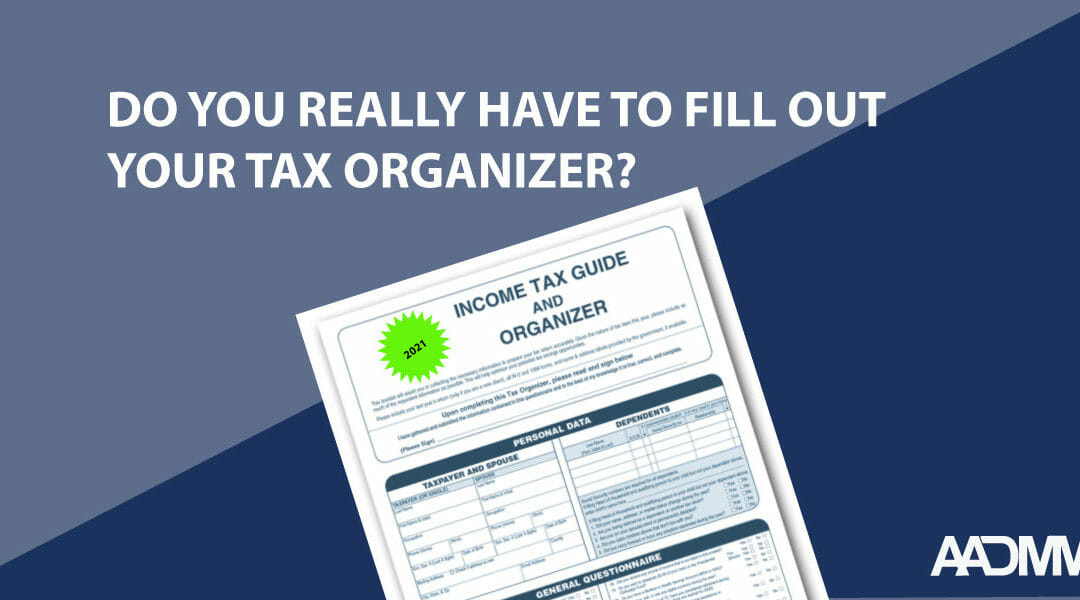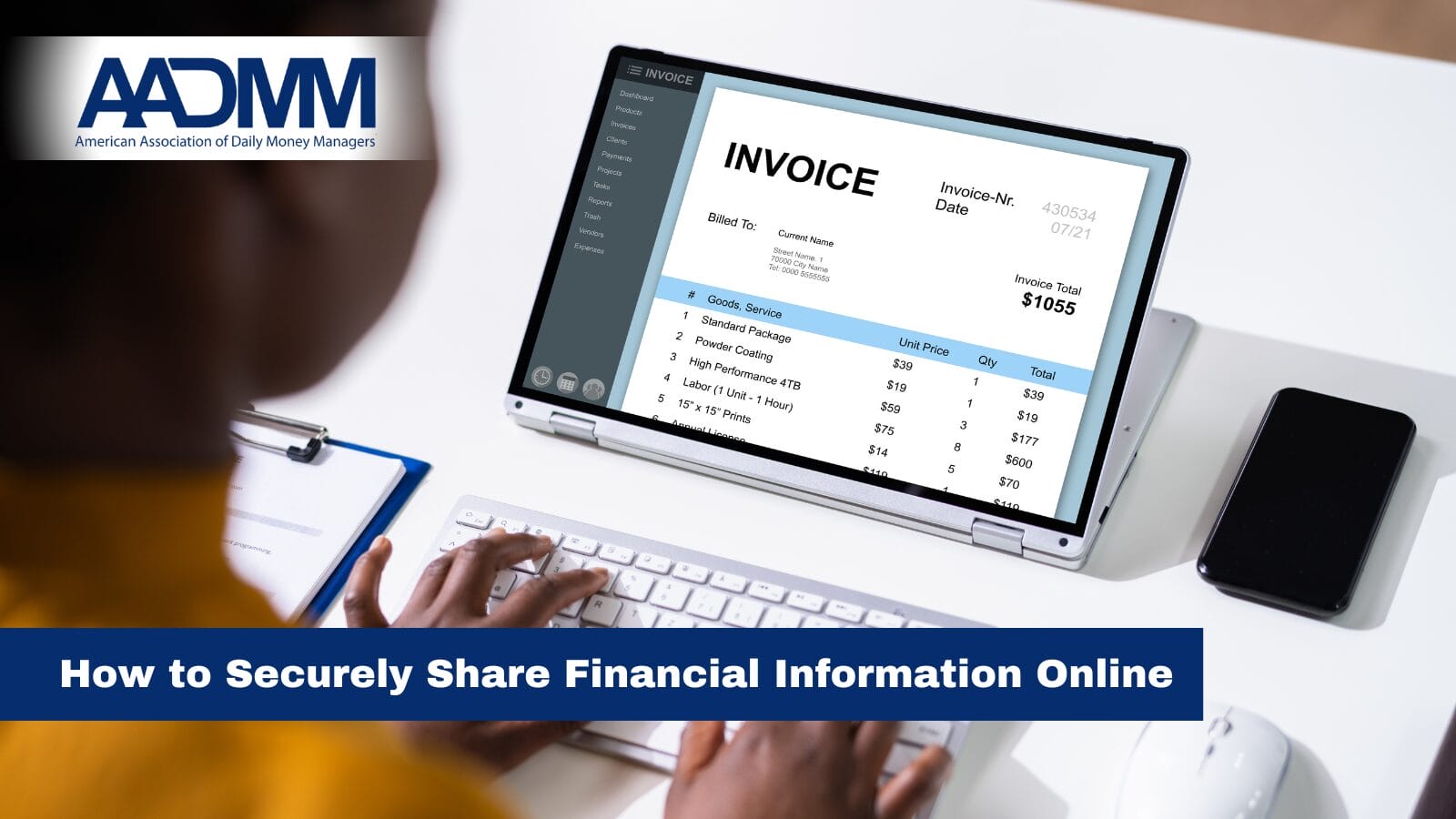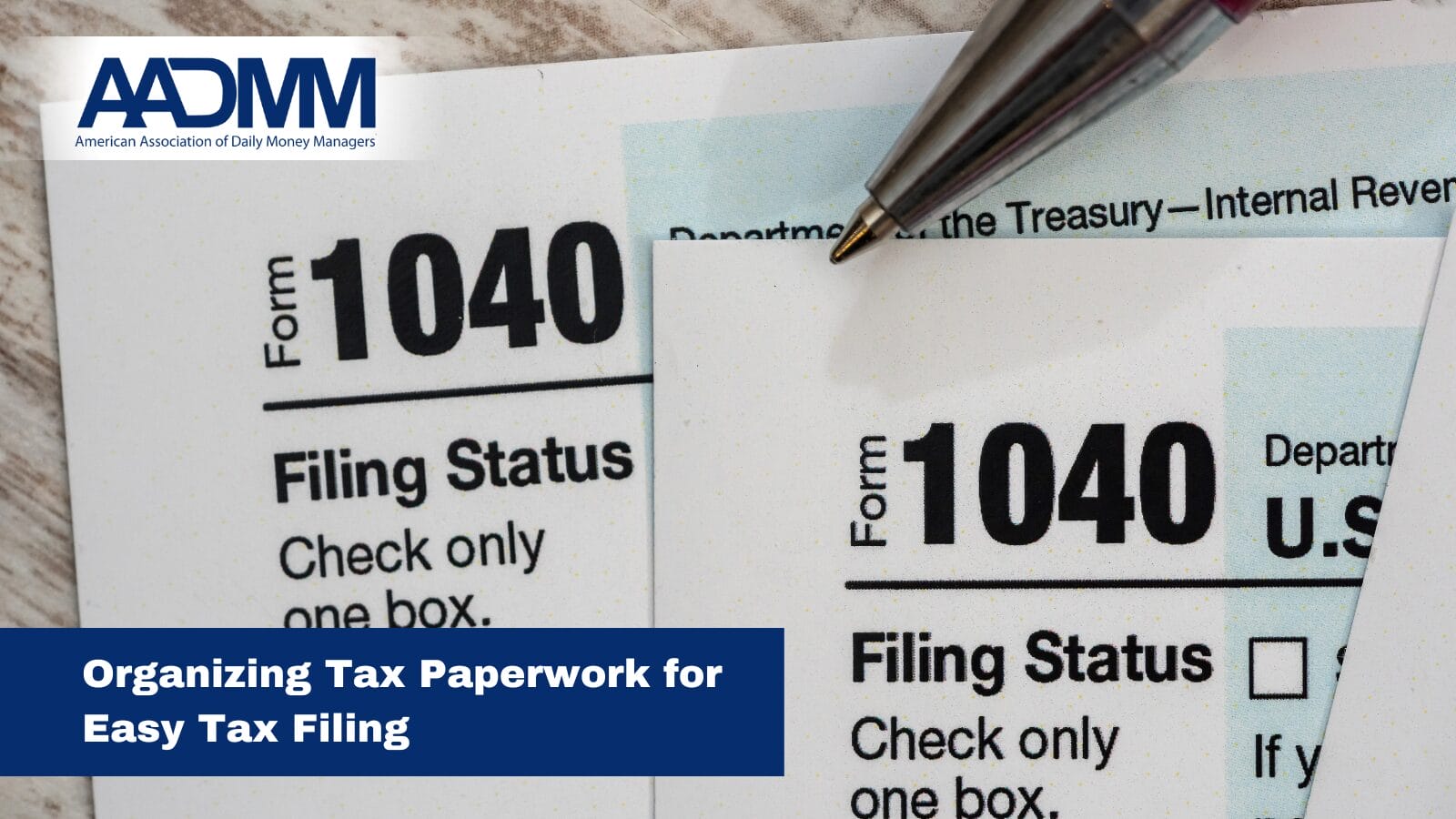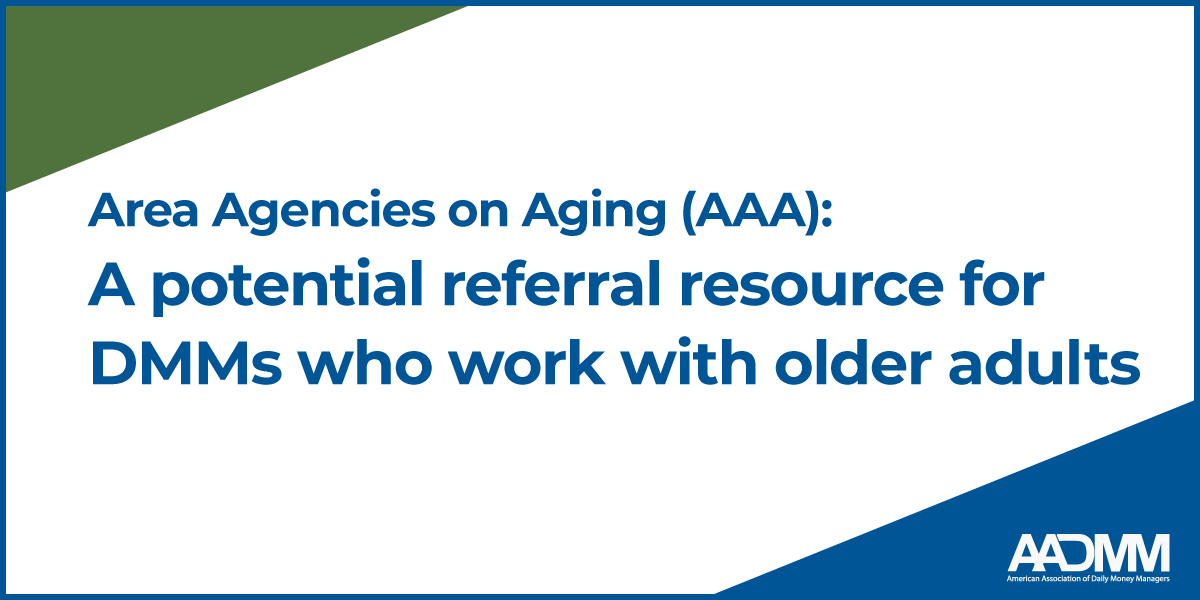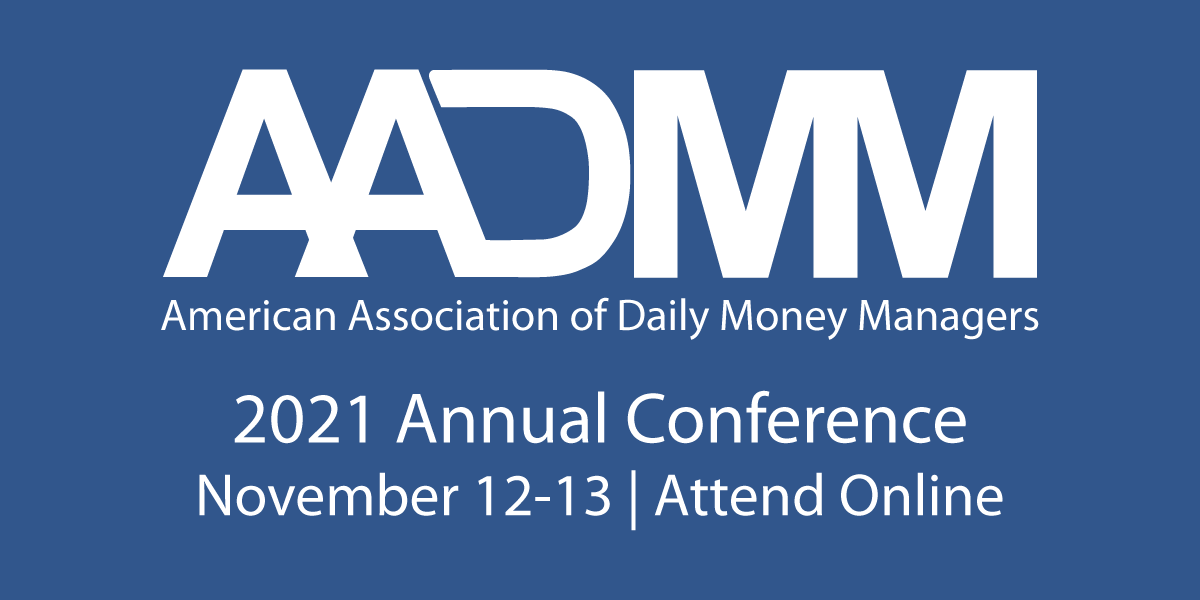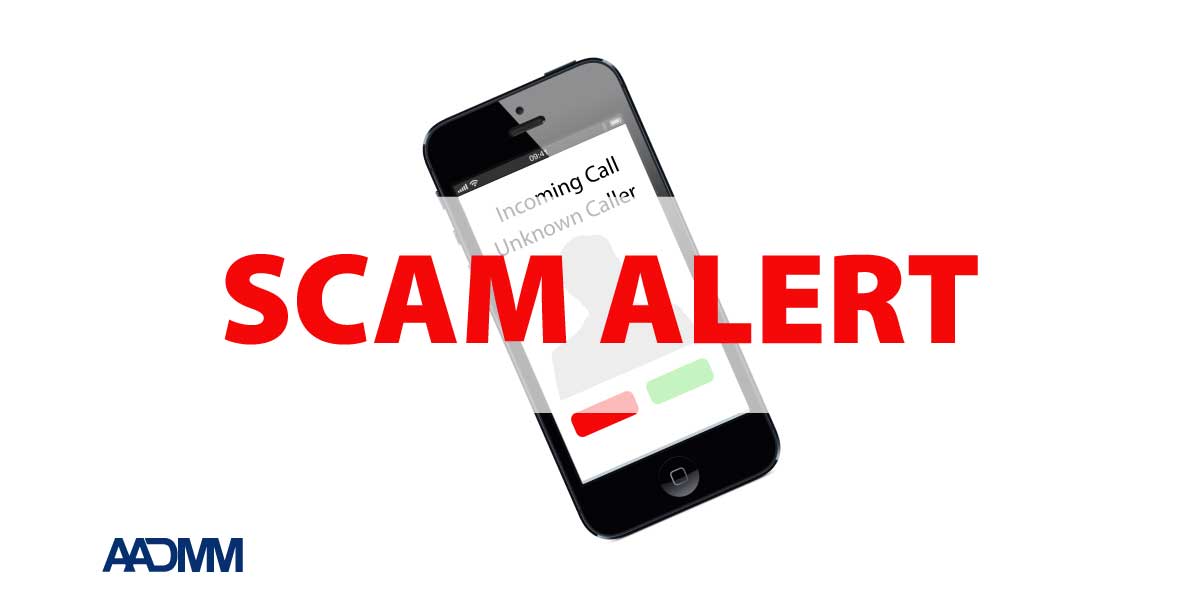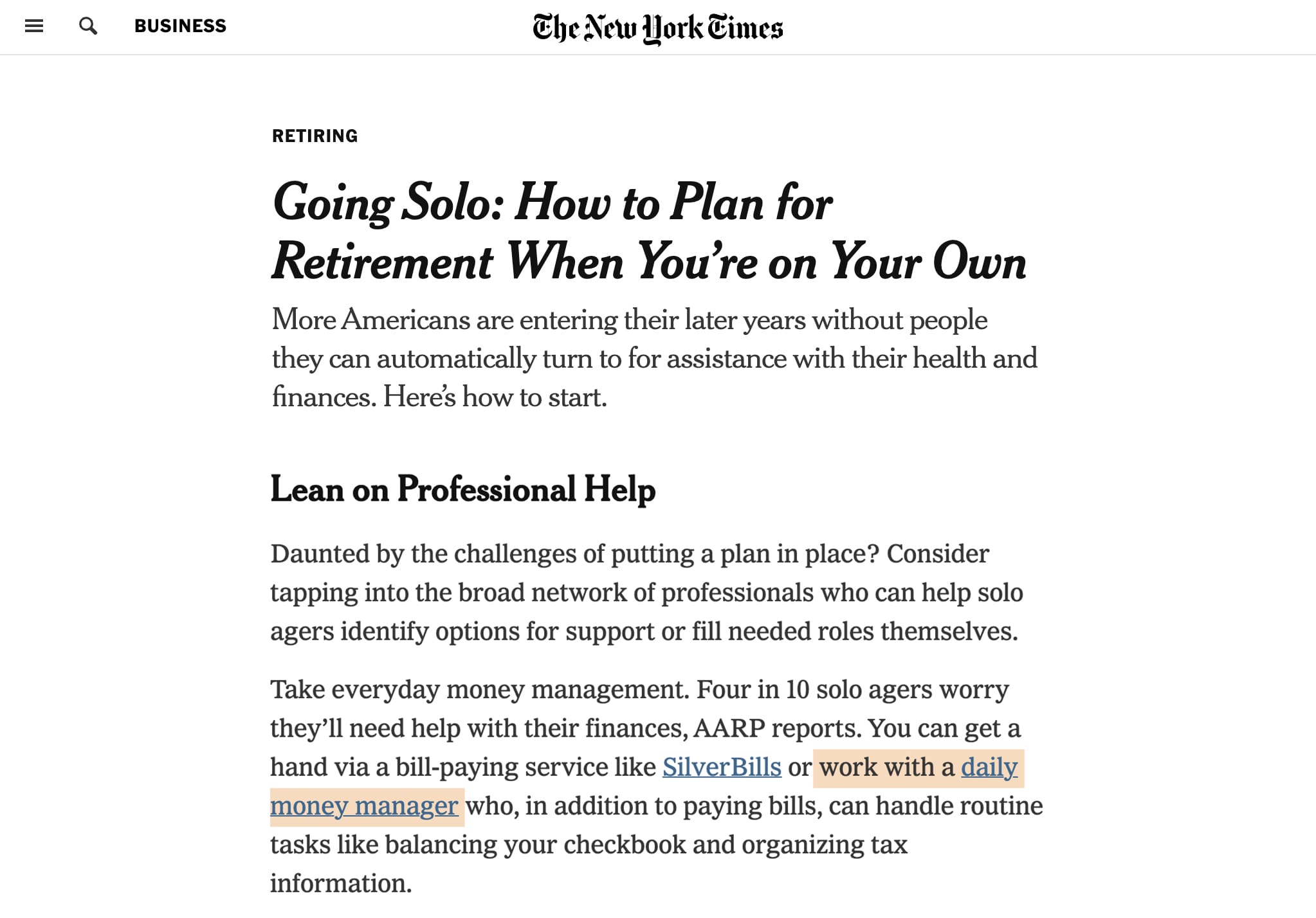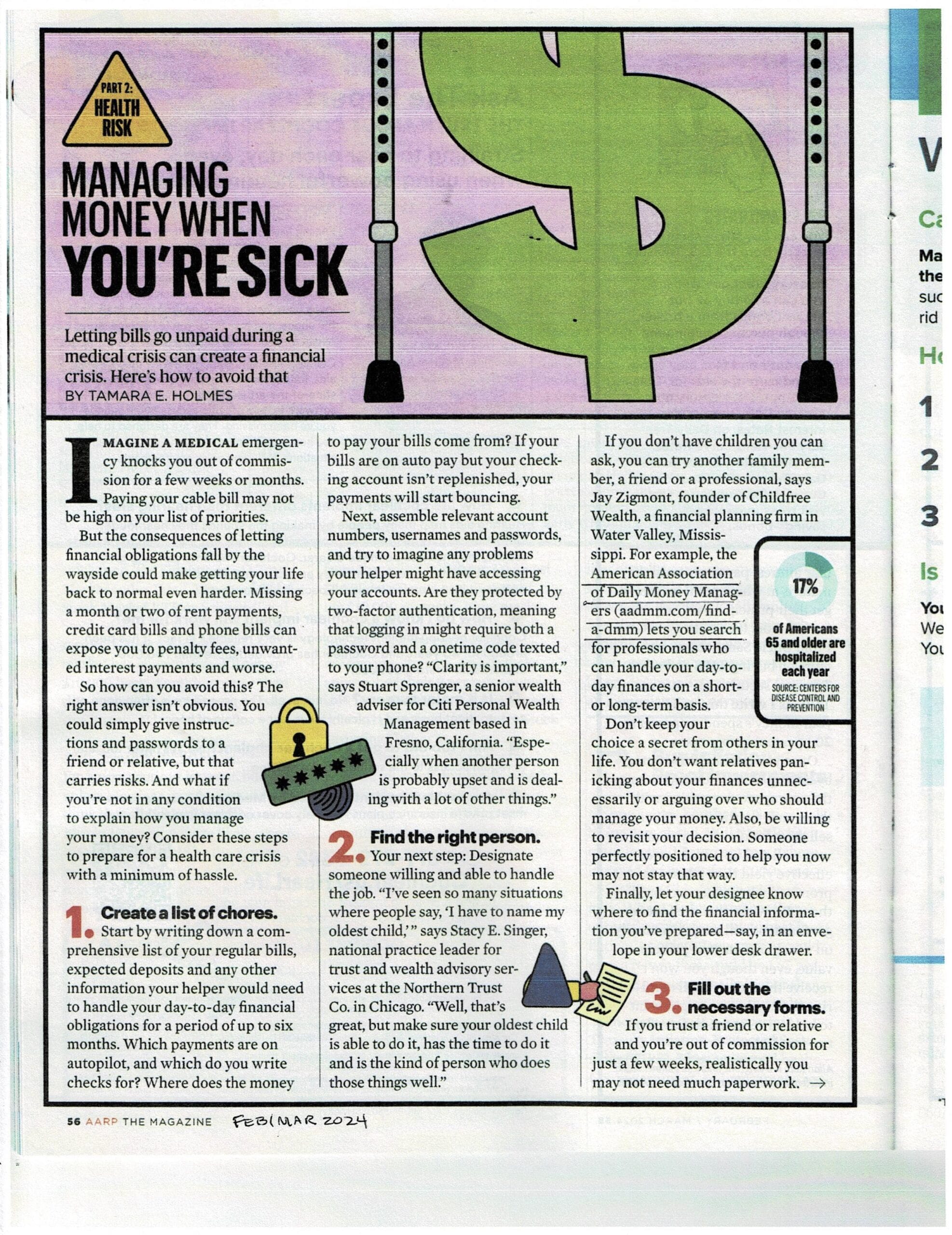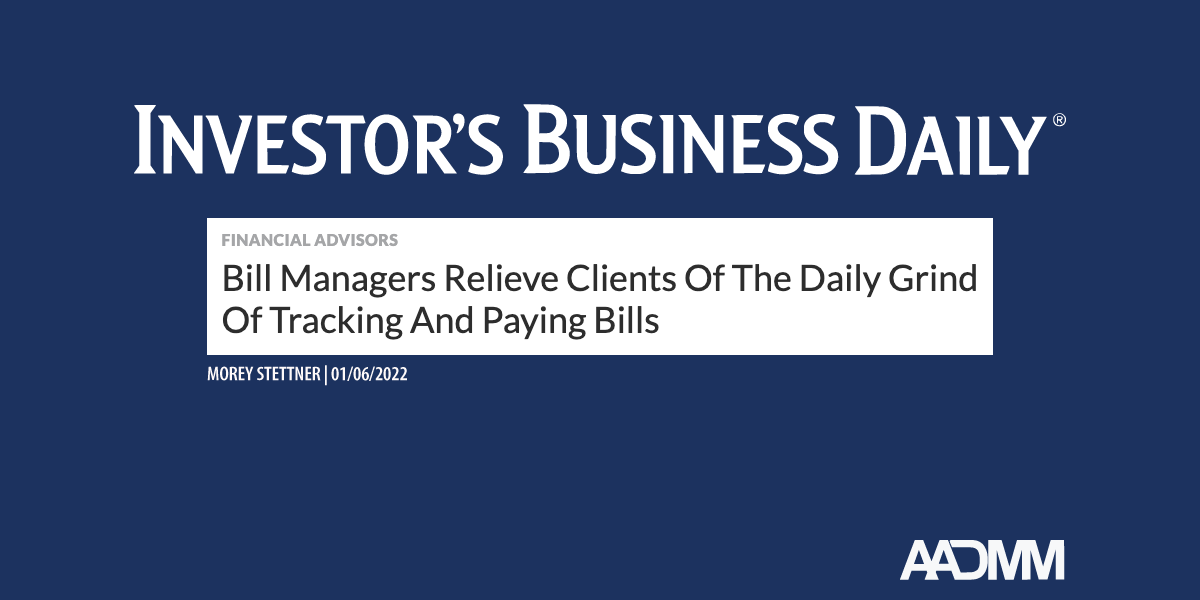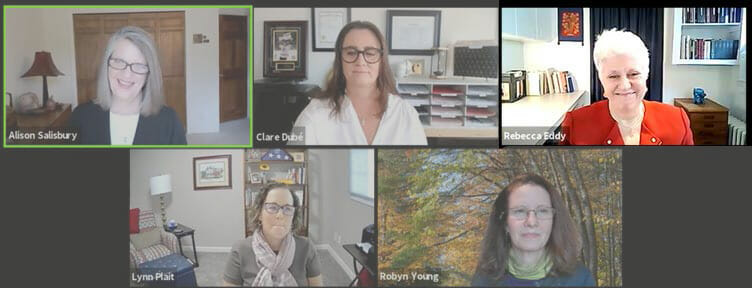
It’s tax time and we all know how daunting it is to put together the package of documents for your accountant or other tax preparer. The document that seems to scare us the most is the tax organizer, the document your accountant sends you to help you collect your tax information. It looks like so much work! It doesn’t have to be. Here are some do’s and don’ts for handling this important document.
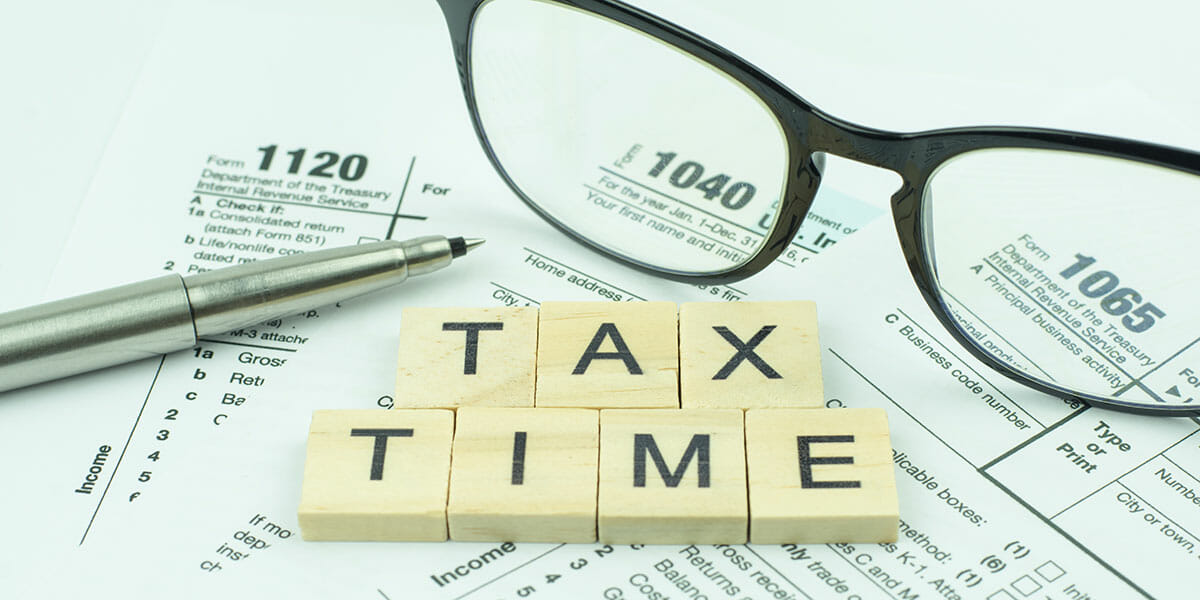
Each tax season we are asked, “do I really have to fill out the organizer completely”? We recommend that you check with your accountant, but in our experience at Everyday Money Management, where we put together many tax packages each year, the answer is no. There are parts of the organizer that you need to complete and others for which you can simply provide the supporting document that was issued to you (1099 or other document) without transcribing the information into the organizer.
We see two potential problems with fully completing the organizer. The first is that we are human and make transcription errors, so copying numbers from a 1099 into the organizer may introduce errors into your tax return. The second is that we may not know which number on a composite tax summary, for example, is the number the accountant needs, and we might record the wrong number.
To make things as easy as possible for your accountant, do the following:
- Use the Organizer as a Guide. Use the organizer as a guide to identify which forms and information were part of your tax submission last year. This should prompt you to either find the current year’s information or identify a change in income or deductions. For example, if you sold stock or real estate, closed an account, had a new source of income, or a new deduction, find the documents that substantiate this.
- No Supporting Document? Write it in the Organizer. For any income or deduction for which you do not have a supporting document, record the information in the organizer. If you closed an account, make a note of that in the organizer.
- It’s OK to Use Your Own Lists. Most accountants don’t mind if you create your own lists (for example, a spreadsheet showing your charitable donations or home expenses related to your home office deduction). Simply write a note such as “see attached list” in the organizer in the space that asks for that information.
- Answer the Questions! If your organizer comes with a list of questions at the beginning, answer the questions. This helps your accountant to understand any changes in your life and your financial situation and determine which taxes or deductions might apply to you this year. It will also help your accountant to do future tax planning.
Follow these guidelines for an easier tax preparation experience:
- ASK your accountant to confirm how they want the organizer handled.
- DO write in the organizer any information that is not on your supporting documents.
- DON’T write information in the organizer that is already provided by one of your supporting documents. You don’t want your accountant to spend (costly) time identifying and resolving discrepancies between the organizer and the supporting documents.
- DO jot down any questions you have in the organizer, on the page that prompted your question. For example, if you aren’t sure about whether your massage therapy is tax deductible, write that question on the page that asks about medical deductions.
With these tips in mind, this will be the year that you master the organizer, complete your tax package, and deliver it on time to your accountant! If it still seems too daunting, you can find and contact a daily money manager in your area through the AADMM Directory. A daily money manager can help you get your tax package together and we promise, it won’t be scary.
Lea Nichaman, CDMM® and founder and president of Everyday Money Management LLC in Rockville, MD. Originally published at: https://www.everydaymoneymanagement.com/blogs/do-you-really-have-to-fill-out-your-tax-organizer

